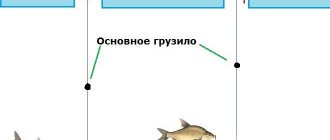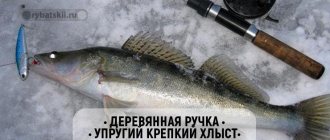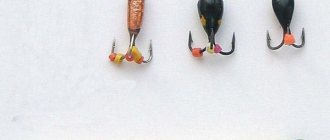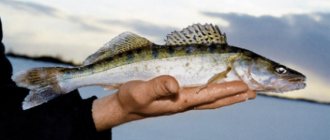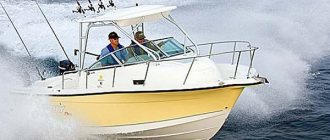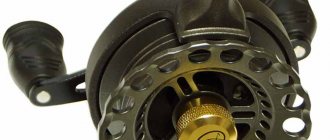| Place | Name | Characteristics in the rating |
| The best balancers for pike |
| 1 | Kuusamo Tasapaino 50 mm BR-S | Best Realism |
| 2 | Nils Master Nisa | Best shallow water balancer |
| 3 | Lucky John Pro Series Mebaru | The most effective bait for large pike |
| 4 | Scorana ICE FOX 55mm | Bait provocateur |
| 5 | AQUA TRAPPER 7 | Affordable price. The longest travel balancer |
| The best balancers for zander |
| 1 | Lucky John Pliant | The best search balancer |
| 2 | Karismax Koko 1 | The sharpest hooks |
| 3 | Nils Master Jigger | Time-tested bait |
| 4 | Rapala Flat Jig RFJ06-HFGFR | The best bait for areas with strong currents |
| 5 | USAMI DANSA Zander Special | The most effective game for zander |
| The best balancers for perch |
| 1 | Rapala SNR | High quality. The most catchy balancer |
| 2 | Scorana Ice Crystal Mark2 | Highly detailed bait |
| 3 | Kuusamo Tasapaino X-Pro | The best balancer for catching trophy bass |
| 4 | Frost Nova | Best price |
| 5 | Hijaro 50 FT Sprut | Time-tested efficiency |
Winter fishing for pike perch on a balance beam
Among winter fishermen, pike perch has always caused controversy - some claim that it is perfectly caught on a balance beam, while others argue that there is no better bait for this predator than rattlins and spinners. But where is the truth? And the truth is in the golden mean, as always. The fact is that pike perch can be caught on a balancer - yes, not always, not everywhere, but sometimes it stubbornly ignores other baits, preferring only the balancer. This is such a fastidious comrade.
Balancer FIN 20 Lucky John 207 for 1 pc. Balancer Jigger-4, 12 s, m 45 g, 095 Nils - Master 1,189 for 1 piece. Balancer CLASSIC 41 Lucky John 228 for 1 pc. Balancer LAMPRIPE 76 mm, color 102 AQUA 117 for 1 piece. Freeway balancer, color 09 Freeway 79 for 1 pc. Balancer Slasher No. 7040 color 10 Helios 165 for 1 piece. Balancer Deep No. 7056 color 92 Helios 165 for 1 piece. Balancer Deep No. 7056 color 87 Helios 165 for 1 piece. Balancer Dolphin, color 07 grey.blue.red ProfiLux 194 for 1 piece. Balancer FLY ROACH 80 mm, Sinking 8 Izumi 399 for 1 pc.
Choose balancers for pike perch
Winter fishing for pike perch on a balance beam
You need to prepare in advance for catching pike perch on a balance beam in winter. You need to choose the right place, select catchy gear taking into account the habits of the fish, and do not forget to warm yourself thoroughly so that nothing distracts you from fishing.
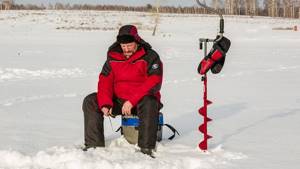
To choose the right place, remember that pike perch is a predatory fish, so it is logical to position itself to catch it in those places where there is its food supply. To do this, you will have to walk on the ice in search of its parking lot. But believe me, it's worth it. After all, unlike pike, pike perch is a schooling predator, so if you find a good place, then you are guaranteed a good catch. Of course, with the right tactics.
The most promising places for pike perch to live:
- eyebrows
- pits
- stuck areas
- flooded bushes
- deep areas
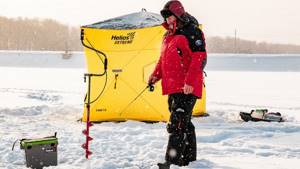
IMPORTANT! Pike perch prefers depth, and even in winter does not change its habits. Therefore, it is first more advisable to check all the deep places in the reservoir. In other areas it is more difficult to detect a predator; it will require effort, time, and a certain skill. Sometimes pike perch rises to the middle layers, remember this when playing with bait.
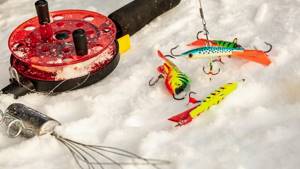
What is the best time to fish?
Here the opinions of fishermen can differ radically. Usually pike perch goes hunting in the evening, but this does not mean that fishing during the day or in the morning will be unsuccessful. This fanged cunning can easily get hungry at any time and go out in search of prey at absolutely any time (remember the nightly visits to the refrigerator by hungry household members).
In winter, the fish’s metabolism slows down, therefore, after successfully hunting, it stops feeding for several days. And when he feels hungry again, the last thing he will care about is what time it is and what time of day it is. But a slight increase in bites still occurs in the evening. If you don’t have the opportunity to go out for night fishing, then feel free to plan to catch a toothy trophy at any time convenient for you.
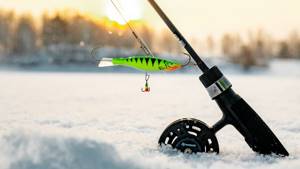
Choosing a winter balancer for pike perch
The main aspects that you should pay attention to when choosing a balancer for pike perch in winter are the following:
- color
- size
- balancer weight
- plumage type
- form
- buoyancy

Size and weight
Pike perch are usually caught at impressive depths, so the weight of the bait must be appropriate in order to reach the bottom. At the same time, in snarled areas it is worth choosing a model with smaller dimensions, and in holes you can safely take a large balancer - 7 cm or more. If you take a smaller balancer, then while it slowly sinks to the bottom, there is a high probability that a perch will grab it. You can limit yourself to a universal size of 6 cm.

The weight of a balancer for catching trophy pike perch can reach 20-50 grams, but the most popular weighs from 12 to 15 grams.
Box 36x22x5cm (HS-ZY-049) Helios 565 for 1 pc. Box 13.2x10.5x3.3cm for wobblers, balancers (HS-L-1) Helios 210 for 1 pc. Box 23x11.5x6cm double-sided (HS-TB-4500) Helios 335 for 1 pc. Fishing box (7006) Salmo 135 for 1 pc. Box for lures LCB 2-sided. 200x126x36 yellow/clear top (#100-P21-Y) PONTOON21 1,028 for 1 piece. Box for lures BOUSUI CASE WG Meiho 1 950 for 1 piece. Box 11.6x23.6x3.8cm (HS-L-105) Helios 280 for 1 pc.
-30%
Box 3701-00 Plano 1 210 847 for 1 piece. Box VB-2 white Three whales 200 for 1 piece.
Choose a convenient box for bait
Balancer color
This parameter is very important, since pike perch has excellent eyesight and can ignore the bait only because it doesn’t like the color. Even if at the same time you used an excellent balancer game. Also, the choice of color depends on the fishing conditions. For example, at great depths, light shades are better visible - bright acidic and silver colors. The closer to the surface the bait is located, the darker its color should be; the most popular are zander balancers made in the form of a small roach or perch. When choosing, be sure to look at the color of the bait’s belly. The optimal tone is orange or red. Even at great depths, he is able to see a dark-colored bait and attack. Therefore, it is always worth trying different types of balancers, based on your experience of using baits on a particular body of water.
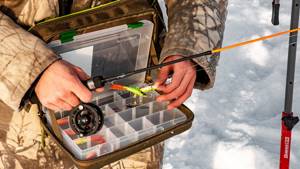
What colors should you definitely have in your bait box?
- red
- light green
- acid yellow
- dark blue with silver back
- with a yellow belly
- natural (natural)
These are the colors that are most attractive to walleye, but given their unpredictability, it doesn't hurt to have other colors in your arsenal. After all, there is no universal bait for pike perch that would be equally catchy in any weather and light. You can change the color of the balancer already on the pond using multi-colored permanent markers.
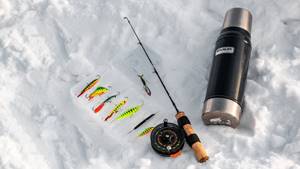
Form
At first glance to an inexperienced fisherman, all balancers for winter fishing for pike perch are the same in shape, but this is not so. They differ in small nuances that affect the buoyancy and play of the bait. It is impossible to predict which form is suitable in a particular case, so it would be correct to take several different balancers with you in order to be able to change the bait if the previous one did not provoke a bite. Which balancers are best for pike perch? Typically, flat balancers work well for fishing in shallow water, and heavy models are convenient for deep areas.
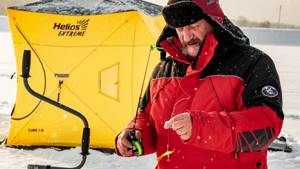
Feather type
The division here is very arbitrary, but a distinction is made between bladed balancers, bladeless ones with soft feathers, and combined ones. Blade baits are equipped with plastic wings in the tail section; they allow you to create a unique type of wiring. In addition, when moving in the water, these blades also create sound waves that perfectly attract fish. When the fish are active, these are the most popular balancers for pike perch in winter
Bladeless balancers have a tail made of fur or hard threads instead of blades. When such baits appeared on the market, fishermen initially reacted negatively to the new product, believing that it was simply a way for sellers to expand their range and increase their earnings. But later they changed their minds, since this bait works well to stir up the striped predator during periods of weak bite. The wiring of such balancers is slower, smoother and has a smaller amplitude.
Combined, as the name implies, are equipped with both blades and a fluffy tail. It is believed that such baits were originally created for catching perch, but they also performed excellently on pike perch, especially when fishing at a depth of more than five meters. In deep areas, such baits work well in any weather; they are the most versatile and catchy.
It probably doesn’t need mentioning that much of successful fishing depends on the sharpness of the balancer hooks, so before fishing, be sure to check all hooks and treble hooks for rust or dullness. If necessary, replace unusable ones with new ones.
Tee phosphor traffic light Helios 35 for 1 piece. Phosphorous tee with yellow eye Helios 25 for 1 pc. Phosphoric tee with red eye Helios 25 for 1 pc. Treble hook. for bait Lucky John with a drop of color. 14/FR (81171FR-14) Salmo 65 for 1 piece. Tee MUSTAD 3D eye with epoxy 103P with phosphorus Helios 42 for 1 pc. Phosphorous tee with red rhinestone Helios 35 for 1 pc. Tee with lining No. 16 color-09 (120794) AQUA 38 for 1 pc. Owner tee with drop ST36-10 FT (10 pcs) OWNER 45 for 1 pc. Tee MUSTAD 3D eye with epoxy 110P with phosphorus Helios 47 for 1 pc. Tee MUSTAD 3D eye with epoxy 108P with phosphorus Helios 42 for 1 pc.
Any tees to choose from
When purchasing, also check that the size of the hooks matches the size of the bait itself. The balancer should consistently hook the fish, regardless of which side it attacked from. It often happens that pike perch grabs the bait not from the front or back, but across it. If the hook is chosen incorrectly, the fish will simply press it against the balancer with its mouth, and hooking will not work. It’s easy to check the fit – just press the hook against the body. In this case, the hook tip should be in the firing position. To increase the catchability of artificial baits, many fishermen often change the hooks on the balancers in advance to larger ones, which can be bought in fishing stores.
Release Rope 200g (0881) Cargo Cargo 185 for 1 pc. Release 135 gr. Tonar 95 for 1 piece. Release Rope 300g (0883) Cargo Cargo 218 for 1 pc. Release 60 gr. Tonar 74 for 1 piece. 240g release with Helios 150 stainless steel ring for 1 pc. 290g release with Helios 160 stainless steel ring for 1 piece. Uncoil 84g Helios 55 for 1 piece. Cut Cone 105 g (pack of 5 pcs.) Height 16-18-06 (19056) 61 per 1 pc. Winter release 190g. Salmo (9934-190) 237 for 1 piece.
Select a cut in the catalog
Balancer rig for winter pike perch fishing
To successfully catch this tricky fish, you will need not only an appropriate balancer, but also a suitable fishing line, reel and rod.
The fishing rod should be very elastic, with a hard whip to carry out a powerful and sharp hook. The pike perch's jaw is rough, so the hook must be appropriate.
Winter fishing rod Ice Battle 50 carbon (N-IB50) Nisus 870 for 1 pc. Winter fishing rod Ice Sensor 45 Lite (N-IS45L) Nisus 1,280 for 1 piece. Rod PERCH Soft 51cm Salmo 1,993 for 1 piece. Winter rod. C-Tech PERCH Soft 50 cm Lucky John 2 133 for 1 piece. Winter fishing rod Ice Battle 55 carbon (N-IB55) Nisus 1,045 for 1 piece. Winter rod. C-Tech ZANDER 60 cm Lucky John 2,400 for 1 piece. Winter fishing rod Ice Sensor EVA 45 Hard (N-ISE45H) Nisus 1,190 for 1 piece. Winter fishing rod Black Ice Rod 45 (N-BIR45-T) Nisus 260 for 1 pc. Rod Team Predator 60cm Salmo 2 271 for 1 piece. Rod PIKE 51cm Salmo 1,728 for 1 piece. Rod set winter C-TECH PIKE & PERCH SET Lucky John 3 155 for 1 piece. Tele rod winter C-TECH TRAVEL 50 cm Lucky John 1,595 for 1 piece. Winter rod. C-Tech ALL-IN-1 PERCH 45 cm Lucky John 2,035 for 1 piece. Winter rod. C-Tech HEAVY 50 cm Lucky John 2,265 for 1 piece. Winter rod. SENSITIP 50 cm Salmo 718 for 1 piece.
The optimal diameter of the fishing line is 0.22-0.25. It is unnoticeable and at the same time has a safety margin sufficient to catch pike perch. A standard winding length of 50 meters is sufficient. We use a fluorocarbon leash with or without a swivel for quickly changing baits.
There are different opinions about the best way to tie the balancer - directly to the fishing line, with a clasp or a blind loop. Here everyone is free to choose for themselves what is more convenient for them, but without unnecessary elements the tackle will be more catchy, since a curious pike perch will be carried away only by the bait and will not pay attention to the additional components of the tackle.
Keep an eye on the sharpness of the hooks, because this is your direct tool; if it becomes dull, immediately change such a hook or tee.
The inertial reel should be light and comfortable, the choice is yours, the main thing is that it is comfortable for your hands.
Reel NORD PRO 62mm Nisus (N-PRO-D500-60) Nisus 745 for 1 pc. NORD Horizont 60mm (HS-D510-60) Helios 575 coil for 1 pc. Reel NORD 52mm Nisus (N-D500-50) Nisus 585 for 1 pc. Wiring reel WH 56PK (D) Pier Master 70 for 1 pc. Inertial coil Seliger (1001204) SWD 610 for 1 pc. Winter reel Arctic Char 70 mm XP Stinger 605 for 1 pc. Wiring reel PK-55 (ABS) black-red PIRS 50 for 1 pc. Reel Nelma-Z-3 (right-handed) Colored body Nelma 2,770 for 1 pc. Reel Nelma-Z Nelma 3 375 for 1 piece. Wiring reel WH 68PK (O) Pier Master 95 for 1 pc.
Buy a winter inertial reel
Technique for catching pike perch on a balance beam
After you have chosen the place where the pike perch is, you can settle down, lay out your gear and start fishing directly. The main thing in the technique of catching this striped comrade is the angler’s ability to pause while fishing. Even if you have little experience and the wiring technique is not sufficiently mastered, still take pauses, this will attract pike perch and it will most likely attack the bait. To begin, lower the balancer into the selected hole, wait 10 seconds and gently tap the bait on the bottom. Then again, pause for 10 seconds or even a little more, and repeat tapping. This technique will attract pike perch if it is standing in the lowest layers of water.
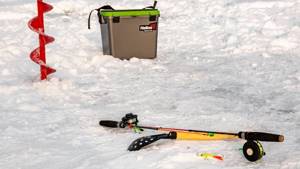
Another tactic of retrieving is a step-by-step approach, when we throw the balance beam into its middle and start tossing it slightly, as a result of which the bait seems to go down the steps, hence the name of the technique. However, this is only possible when the slope is quite flat; if the slope has steep slopes, then the balancer, when thrown to the middle, will fall from there. In this case, it is necessary to stop it at different depths, which also gives us stepped wiring.
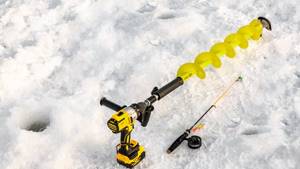
And it doesn’t matter which technique you choose, the main thing is to understand what length of pauses and jerks will be optimal. When winter fishing for pike perch, it is preferable to have an echo sounder in order to save a lot of time and effort on studying the terrain and searching for striped cunning sites.
Fishing
During winter fishing, pike perch is lazier and calmer than during summer fishing, so it should not cause much trouble. The most important thing is not to miss the bite and hook it in time.
IMPORTANT! When bottom fishing for pike perch, avoid sudden movements; overly aggressive play will scare away rather than attract the predator. If the pike perch does not want to take the bait on the bottom, just go higher, as it can also be caught in the middle layers of water.

When winter fishing for pike perch using a balance beam, try not to make the following fishing mistakes:
- Using rods with soft whips
- Weak connection of the balancer to the fishing line
- Use of large fasteners and other elements
- Dull hooks not replaced in time
- Excessively thick fishing line
- Fishing only deep areas and ignoring the middle and upper layers of water
- There are a lot of unnecessary movements in wiring
If you try not to make such mistakes, then with a very high degree of probability your fishing will be successful and you will return home with weighty trophies.




